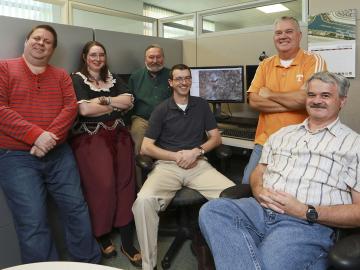Filter News
Area of Research
- (-) Geographic Information Science and Technology (2)
- (-) Isotopes (3)
- Advanced Manufacturing (5)
- Biological Systems (3)
- Biology and Environment (52)
- Biology and Soft Matter (2)
- Building Technologies (4)
- Chemical and Engineering Materials (2)
- Chemistry and Physics at Interfaces (6)
- Clean Energy (90)
- Computational Biology (1)
- Computational Chemistry (1)
- Computer Science (1)
- Electricity and Smart Grid (1)
- Energy Frontier Research Centers (7)
- Functional Materials for Energy (8)
- Fusion and Fission (15)
- Fusion Energy (1)
- Isotope Development and Production (1)
- Materials (82)
- Materials for Computing (6)
- Materials Synthesis from Atoms to Systems (5)
- Materials Under Extremes (6)
- National Security (25)
- Neutron Data Analysis and Visualization (2)
- Neutron Science (24)
- Nuclear Science and Technology (6)
- Quantum Condensed Matter (2)
- Reactor Technology (1)
- Renewable Energy (1)
- Supercomputing (59)
- Transportation Systems (2)
Media Contacts

Oak Ridge National Laboratory scientists recently demonstrated a low-temperature, safe route to purifying molten chloride salts that minimizes their ability to corrode metals. This method could make the salts useful for storing energy generated from the sun’s heat.

Researchers at ORNL explored radium’s chemistry to advance cancer treatments using ionizing radiation.

More than 50 current employees and recent retirees from ORNL received Department of Energy Secretary’s Honor Awards from Secretary Jennifer Granholm in January as part of project teams spanning the national laboratory system. The annual awards recognized 21 teams and three individuals for service and contributions to DOE’s mission and to the benefit of the nation.

Bruce Lester has had a lot of jobs: fisherman, horse trainer, “professional stair builder.” He last worked for a real estate company, surveying land using geographic software. “When the bottom fell out of the construction industry and the company downsized, I got laid off,”





